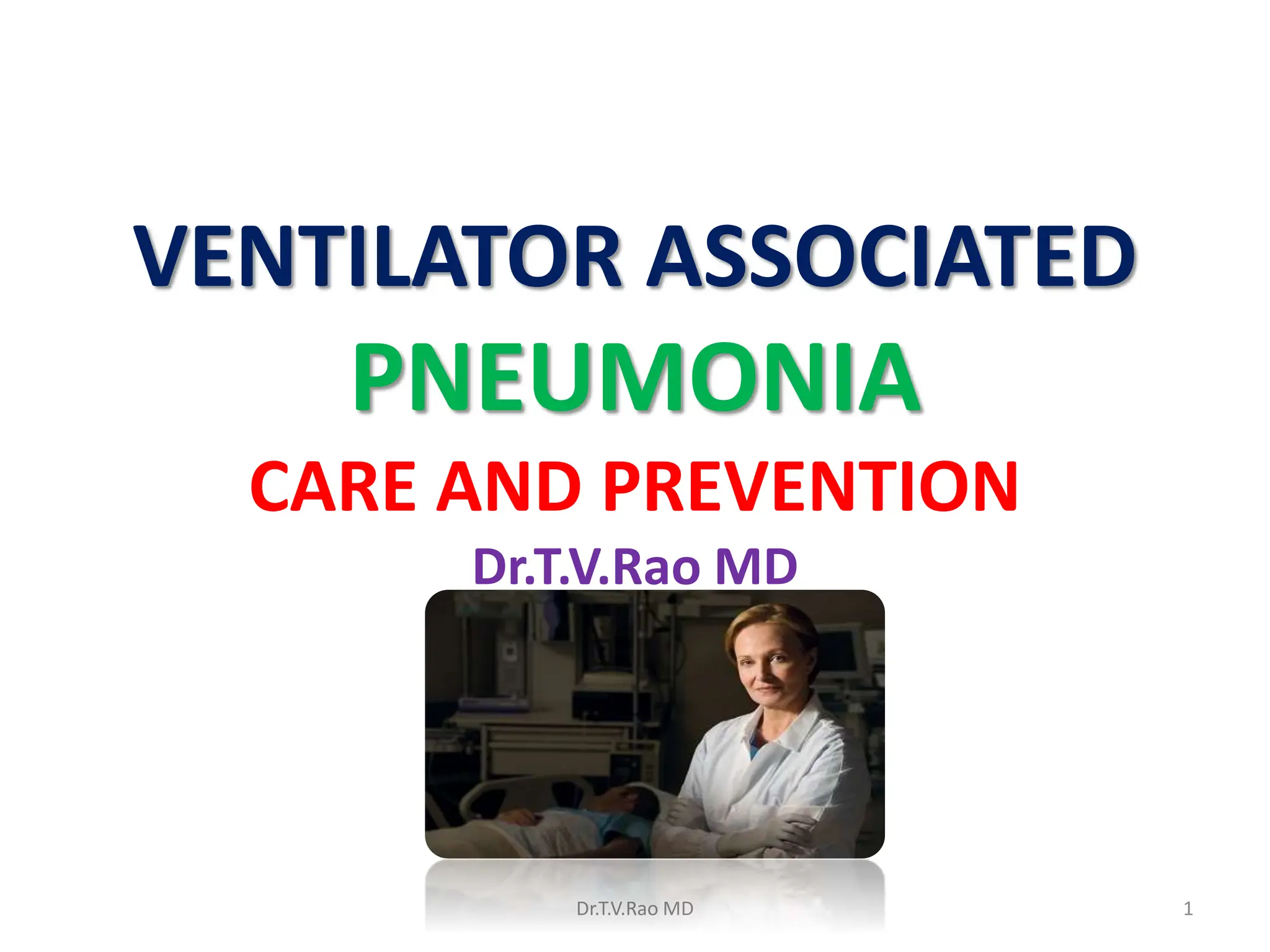This document discusses ventilator associated pneumonia (VAP), including its definition, risk factors, pathogenesis, prevention strategies, and more. Some key points:
- VAP is pneumonia that develops in intubated patients and is the leading cause of hospital-acquired infections in the ICU. The risk is 6-21 times higher for mechanically ventilated patients.
- Common risk factors for VAP include underlying illnesses, prolonged mechanical ventilation, supine position, and comorbidities like diabetes or heart failure.
- Bacteria are usually the cause, often multidrug-resistant pathogens like Pseudomonas, Klebsiella, Acinetobacter, and MRSA.
- Prevention strategies include





































































































